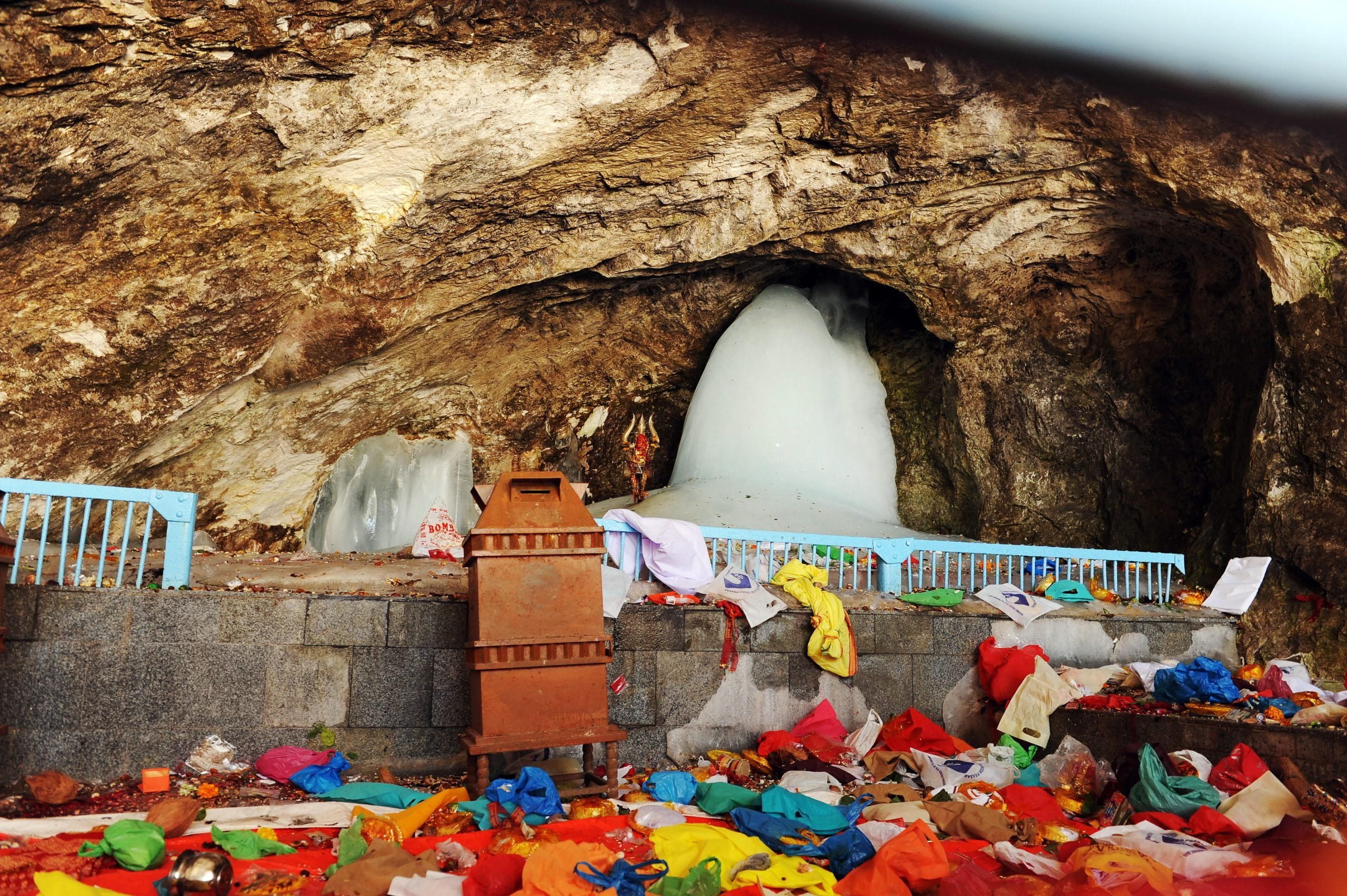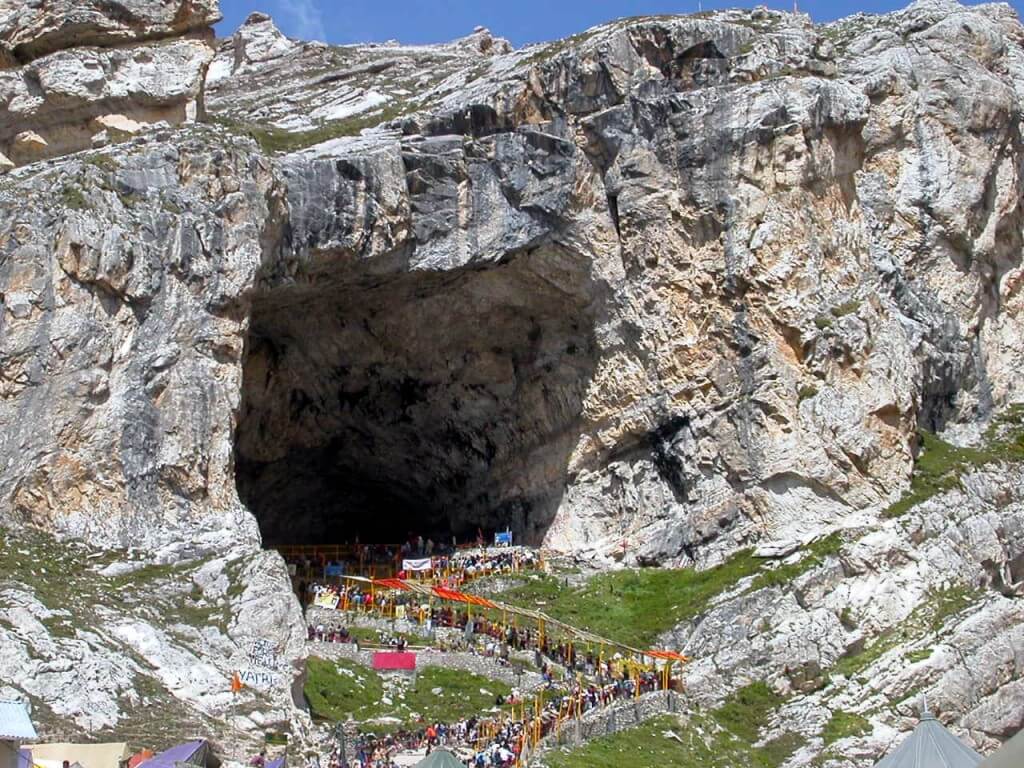AMARNATH
About AMARNATH Kashmir
Nestled within breathtaking landscapes, Amarnath stands as a sacred pilgrimage site, a testament to the spiritual and cultural heritage of the region. Renowned for the Amarnath Cave, this destination carries immense religious significance, drawing devotees from distant places. The Amarnath Yatra is a revered pilgrimage, attracting those in search of a divine connection and a profound spiritual experience.
The Amarnath Temple is dedicated to Lord Shiva and is one of the 18 Maha Shakti Peethas. Devotees visit this temple to get a glimpse of the Lingam of Lord Shiva which is formed from water drops that are frozen to build vertically. However, the Lingam waxes from May to August. According to religious practitioners, the Lingam grows and melts with the moon phases.
How to Reach Amarnath
By Road
Accessible by road, Amarnath offers various transportation options for pilgrims making their way to this sacred site. The journey unfolds with scenic views, building anticipation for the spiritual pilgrimage.
By Foot
The trek to Amarnath is a pivotal aspect of the pilgrimage, enabling devotees to embark on a spiritual journey by foot, forging a deeper connection with the sacred surroundings.








Highlights
Religious Significance
Amarnath holds profound religious importance, with the Amarnath Cave standing as a revered site where devotees worship the naturally occurring Shiva Lingam during the annual Amarnath Yatra.
Natural Beauty
Surrounded by mesmerizing landscapes, Amarnath is not just a spiritual destination but also a place of immense natural beauty, providing a serene and tranquil environment for reflection.
Pilgrimage Experience
The Amarnath Yatra offers a unique pilgrimage experience, involving devotion, endurance, and a sense of community as pilgrims embark on this sacred journey together.
Cultural Heritage
Amarnath symbolizes the rich cultural heritage of the region, with the pilgrimage reflecting the traditions, rituals, and spiritual practices passed down through generations.




Hiking at Pahalgam Golf Course
While you are in the Valley of Shepherds, try your hand at golfing at Pahalgam Golf Course. Avid golfers are fond of this popular tourist thing to do in Pahalgam.
Clicking Pictures in Avantipur Temple
If you are looking for some unique things to do in Pahalgam, then you must pay a visit to this historical place. This ancient temple is located 57 km from Pahalgam where you can show off your photography skills.
Experiencing the Fun of Zorbing
The tranquil meadows of Baisaran hold one of the fun-filled tourist things to do in Pahalgam, i.e. zorbing. Enclosed by snow-capped mountains and tall pine trees, zorbing in the verdant grassland is extremely popular among tourists.
Strolling through Baisaran Hills
Covered with dense pine and cedar vegetation, it is one of the most beautiful and serene places in Pahalgam. It is an hour’s drive from Pahalgam city and a great place to be away from all the hustle-bustle of city life.
Sledding in Chandanwari
With a number of tourists arriving in Chandanwari for picnics and shooting of movies, sledding has become of the popular tourist things to do in Pahalgam. It is also the starting point of Amarnath Yatra, and visitors never miss a chance to experience the thrill of sledding.



Spiritual Journey: Amarnath transcends being a mere destination; it’s a spiritual odyssey where devotees embark on a pilgrimage, seeking the blessings of Lord Shiva. The Amarnath Cave, housing the naturally formed ice Shiva Lingam, becomes the focal point of devotion and prayer.
Natural Serenity: Amidst towering mountains and pristine landscapes, Amarnath offers a natural serenity that enhances the spiritual experience. The surroundings evoke awe and humility, reminding pilgrims of the divine power manifesting in the natural world.
Community Bonding: The Amarnath Yatra fosters a sense of community bonding among pilgrims. Shared challenges and collective devotion create a unique camaraderie, transforming the pilgrimage into not just a personal spiritual quest but also a shared journey of faith.
Cultural Reverence: Amarnath embodies cultural reverence for Lord Shiva and the traditions associated with the pilgrimage. Rituals, prayers, and celebrations during the Amarnath Yatra showcase the enduring cultural heritage of the region.
The journey to the Amarnath Temple involves a trek through the stunning landscapes of the Himalayas, and there are two main routes commonly used by pilgrims to reach the Amarnath Cave. The two routes are the Pahalgam route and the Baltal route.
Pahalgam Route: Starting Point: Pahalgam
Pilgrims usually start their journey from Pahalgam, a picturesque town in Jammu and Kashmir.
Distance: The trek from Pahalgam to the Amarnath Cave is approximately 36 kilometers.
Pilgrimage Duration: The journey usually takes about 4 to 5 days to complete.
Major Stops Along the Route: Chandanwari: This is the initial point of the trek and serves as the base camp. Pilgrims often camp here before continuing their journey.
Sheshnag: This is a scenic location and another significant stop during the pilgrimage.
Panchtarni: It is a vital stop before reaching the Amarnath Cave, known for its five streams.
Terrain: Pilgrims trek through varied terrain, including meadows, forests, and rocky paths.
Baltal Route: Starting Point: Baltal
Some pilgrims prefer the Baltal route, which is a shorter and more challenging route.
Distance: The trek from Baltal to the Amarnath Cave is approximately 14 kilometers.
Pilgrimage Duration: The journey through the Baltal route is shorter, often taking 1 to 2 days.
Major Stops Along the Route: Domel: This is the point where the two routes converge, and pilgrims proceed towards the cave.
Terrain: The Baltal route is known for its steep ascent and descent, making it a more physically demanding option.
Common Points: Holy Cave (Amarnath Cave):
Both routes lead to the Amarnath Cave, where the naturally occurring ice Shiva Lingam is located.
Yatra Season: The annual pilgrimage, known as the Amarnath Yatra, typically takes place during the summer months, starting from late June and concluding in early August. The exact dates can vary based on the Hindu calendar.
Shri Amarnath ji Shrine Board (SASB): The pilgrimage is managed and regulated by the Shri Amarnath ji Shrine Board, which oversees the logistics and safety of the yatra
Things to do in Gulmarg
Here are some things you can do in Gulmarg
"Embark on Your Next Adventure with Us!" KASHMIR SOIL TRAVELS
"Discover Unforgettable Destinations, Exclusive Deals, and Seamless Travel Experiences. Book Now and Make Every Journey Memorable!"
